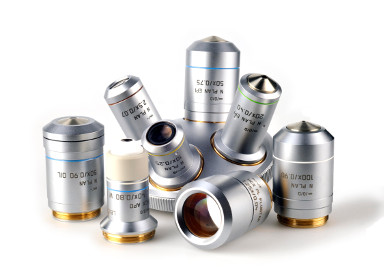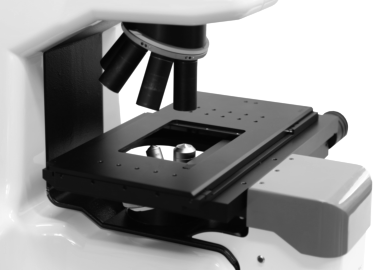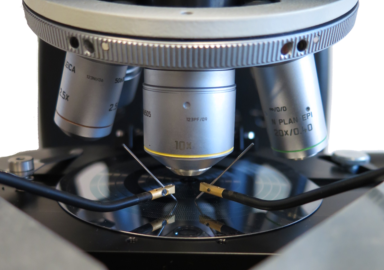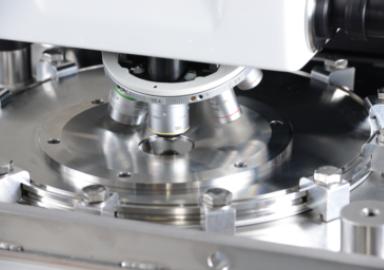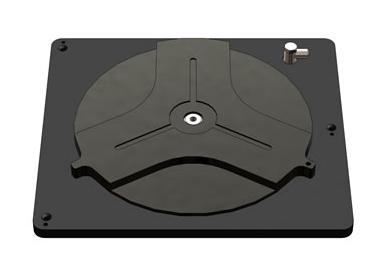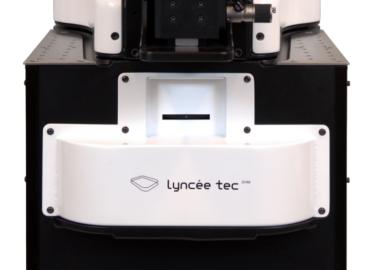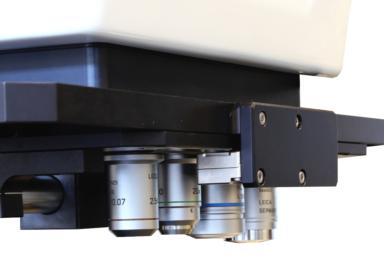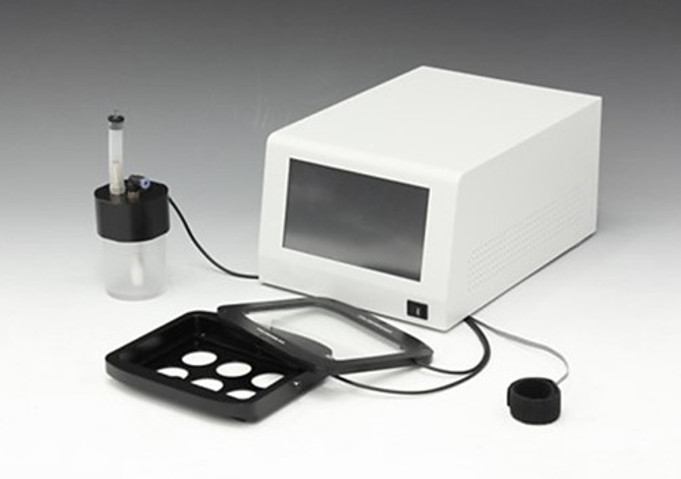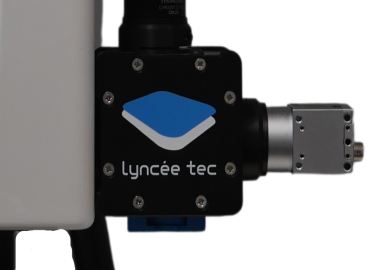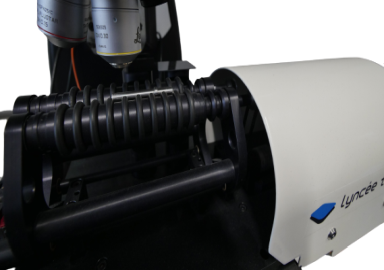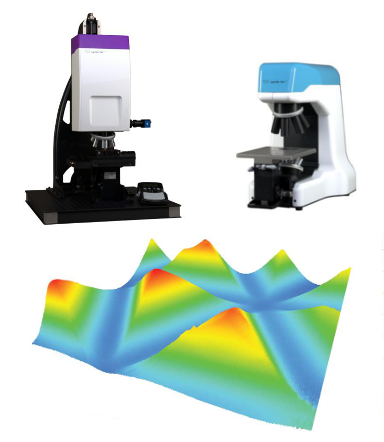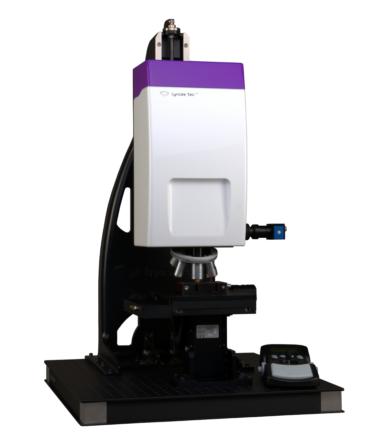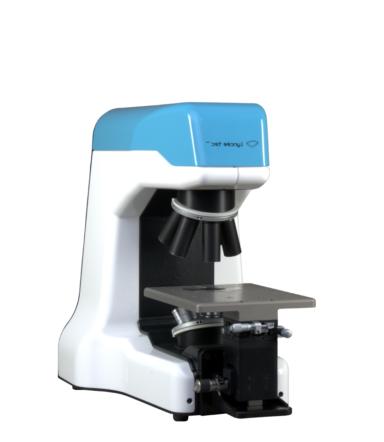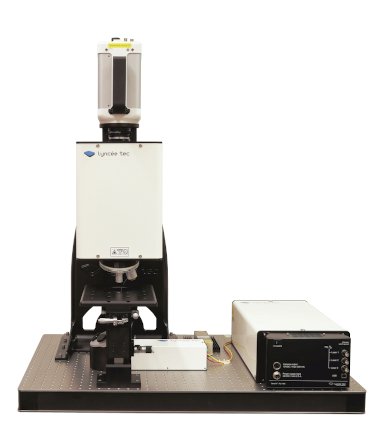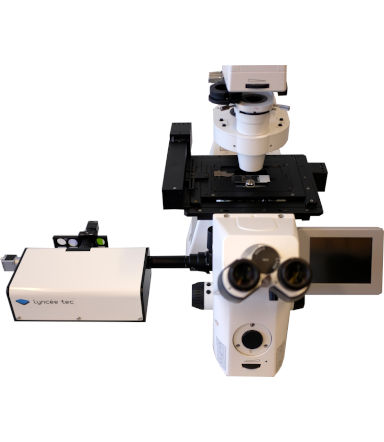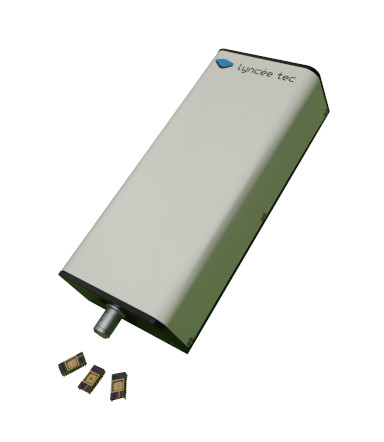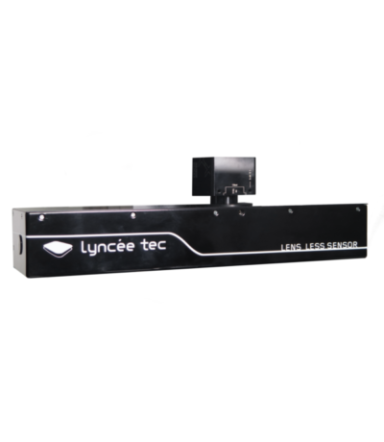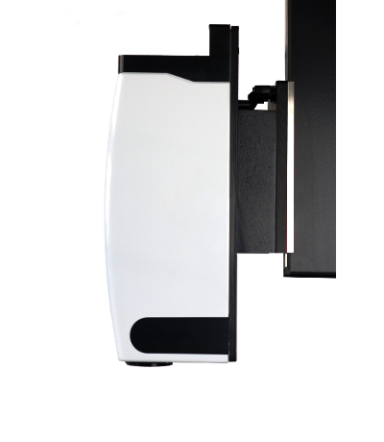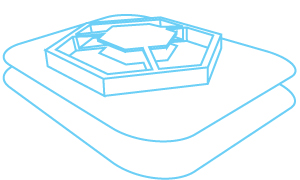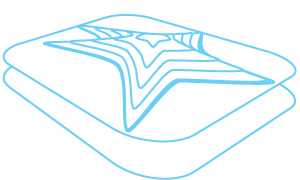Stroboscopic Unit
Description
The laser pulsed stroboscopic unit synchronizes your MEMS excitation and measurement and provides you characterization of your device with unrivaled ease and efficiency. This makes DHM®an unrivaled MEMS Analyzer: just connect your MEMS and measure it ! The stroboscopic unit is controlled by the Koala Acquisition & Analysis software. When operating in standard mode, the 3D topography of the MEMS is displayed at up to 30 frame per second on the display, and all the analysis tools of Koala (out-of-plane measurements, profiles cuts, 3D representation, etc.) are available live. An optional amplifier module delivers up to 230V driving signal. This fan-less amplifier does not generate vibrations and is specifically designed for microscopy measurement.
Drive your MEMS from static to 25 MHz
- The stroboscopic unit is a real waveform generator
- Pre-defined sinus, square and triangle wave
- User defined wave forms (chirps, white noise, impulses, bursts, etc.)
- Up to four output channels to drive your MEMS
- Change excitation signal amplitude and offset and observe 3D topography changes live
Control excitation signal frequencies
- Fixed frequency analysis
- Upward and downward frequency scanning
- Continuous sweep for investigation of non linear resonances
- Frequency approach by continuous sweep from a starting frequency
Characterize the 3D topography of your MEMS
- Live reconstruction at up to 30 fps
- Post-process your data for advanced analysis
Perform simultaneously an electrical analysis
- Record you MEMS output signal as with an oscilloscope
- Two analog and two digital inputs for up to 4 excitation channels
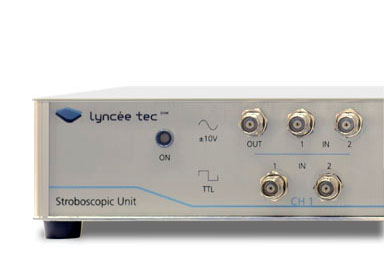
Acquisition Principle
The Holographic MEMS Analyzer by Lyncée Tec is based on a laser pulsed stroboscopic acquisition. A condition for performing a stroboscopic measurement is to use a periodic excitation signal. It is represented as a sinus wave on the image left but it can also be any periodic signal, including impulse to study for instance transients and damping. The stroboscopic electronic module supervised by Koala provides control and synchronization of the excitation of the MEMS, the trigger of the laser pulse, and the camera trigger and shutter time as shown on the figure left. Use of very short laser pulses is essential for measuring a device in motion. The dedicated electronics enable to measure high vertical speed motions thanks to laser pulses in the nanosecond range. To ensure enough illumination intensity, multiple laser pulses are synchronized with the MEMS excitation and integrated by the camera during its shutter opening time. This one is calculated by Koala to record an equal amount of light in stroboscopic and normal (static) measurement mode. The user can set over tens of thousands of 3D topography measurements per period. Each measurement corresponds to a precise phase value of the periodic excitation signal. In other words, the 3D topography of the MEMS is measured during its entire excitation period.
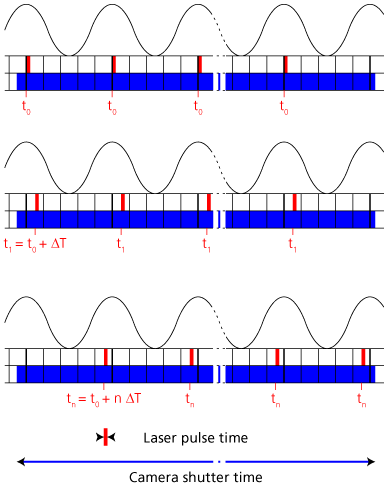
Specifications
| Specifications | Value |
| Fundamental frequency analog output | 0.1 Hz to 25 MHz |
| Measurement points per fundamental cycle | Frequency dependent, up to 215 points |
| Laser pulse length | Down to 7.5 ns, up to 232 repetitions |
| Synchronization precision | < 5 ps |
| Waveform amplitude resolution | 14 bits |
| Waveform generator | Predefined DC, sine, triangular, rectangular or user-defined form |
| Analog output and offset | 0 to ±10 Volts with ±2% accuracy |
| Analog output impedance / max. current | 50 Ω / 100 mA |
| Excitation channel | Up to 4 |
| Number of inputs | 2 analog (-10 V to +10 V) and 2 digital 3.3-5 V TTL per excitation channels, synchronized with the measurement |
| Analog input impedance | 100 kΩ |
| Frequency control | frequency upward and downward scanning with continuous sweep for investigation of non linear resonance frequencies |
